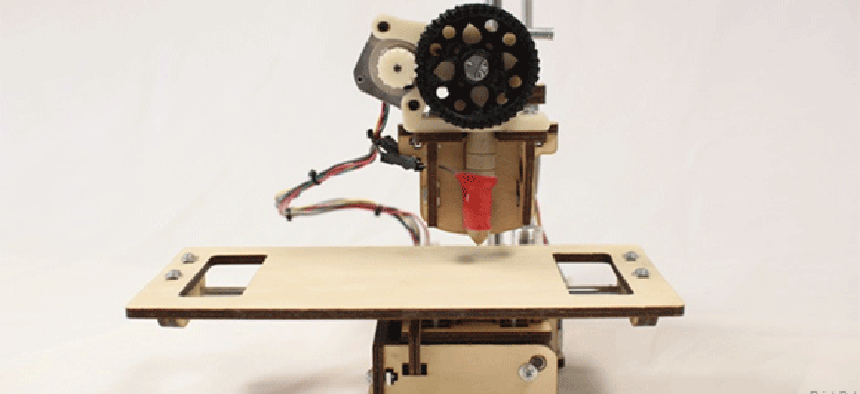3D printers are about to cross the Rubicon


Connecting state and local government leaders
If there has been one thing holding back 3D printing from more widespread use, it was the price of a good 3D printer. That could be changing.
I think it’s a safe bet at this point to say that 3D printing is here to stay. Whether or not it takes off like a rocket, as I expect it might, the utility and uses of such a product are pretty amazing.
The military is using it in Afghanistan to print out gear as needed. President Obama referred to it in his State of the Union address, and cities are using it to help with growth planning.
Unlike a flat-on-paper printer, a 3D printer uses a substrate to build layers upon layers of an object, guided by a CAD file, until an actual physical item is created. Most 3D printers use what is called PLA plastic to create their objects. That means that the final product isn't very rugged and could melt in high temperatures. A few printers can work with more rugged substrates, resulting in some very tough constructions.
As amazing as 3D printers are, the one barrier they haven't crossed yet is price. The cost is likely keeping them out of both general pubic use and wider government service. Most 3D printers cost a pretty penny. I've seen models in the $30,000 range. Even low-end printers can cost a few thousand dollars.
But there are some new entrants in the race toward low-cost 3D printing. CNN recently reported on two companies that are starting to market low-cost 3D printers. The first company is Printrbot, which has several units on sale for between $399 and $650. The other is Makibox, which is selling some models for as low as $200.
Given that the plastic that feeds these printers is relatively inexpensive, the prospect of having a 3D printer in an office or home for just $200 should be tempting.
Agencies that are thinking that a 3D printer could benefit their operations can now test one out with very little risk. And if the $200 printer proves inadequate for every task — the designers told CNN that sometimes "good enough" is good enough — it can at least be a proof-of-concept. An agency that discovered it works well for most tasks but not for those requiring more rugged materials or bigger models would have data to justify a more expensive purchase.
3D printing technology is so versatile that applications will quickly follow once printers are more widely used. The sun may just be rising on 3D printing, but it's got a bright future ahead.




